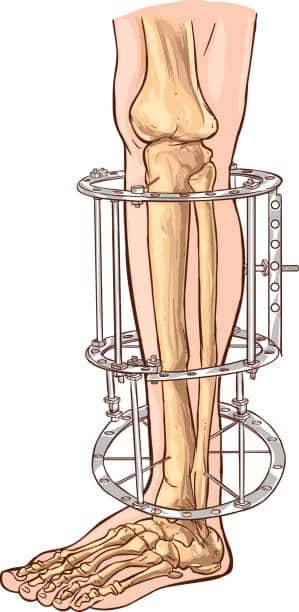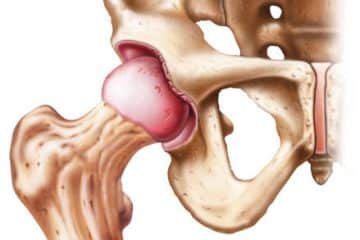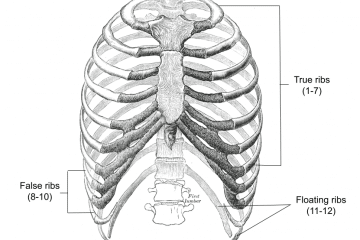External Fixation | Indications | Cost
Overview
For many decades, doctors have used external fixation to manage fractures as a technique to stabilize the fractured bone while maintaining soft tissue integrity.
Fixator structure and mechanics have evolved significantly over time. The major purpose of this procedure is to preserve the fracture’s length, parallelism, and rotation.
This procedure can be used as a temporary fixation or a permanent fixation. If necessary, both procedures can be used in combination with partial internal fixation.
It is critical for surgeons working in a trauma unit to understand the concepts and methods of external fixation for diverse upper limb, lower limb, and pelvic fractures.
What is External Fixation?
It is a surgical intervention in which pins and screws are used to manage an unstable bone fracture.
To hold the metallic pins in position, they are inserted into the bone, reaching beyond the skin’s surface, and secured with a robust external frame. The pins and frame are withdrawn after the fracture heals.
The healing process of the fracture depends on the type of fixation and how much the fracture is stable.
Types of External Fixation
There are three common types of external fixation that are used by surgeons including:
Standard pin fixator. In which pins are inserted into the skin and the bone.
Ring fixator (Ilizarov). Rings are worn outside of the body and are attached to the bone by implanted wires and pins.
Hybrid fixator. It is intended for the treatment of distal and proximal long bone fractures.

External ring fixator
Indications of External Fixation
There is a long list of indications and the following are among the most common of them:
- Unstable injuries to the pelvic region
- Comminuted periarticular fractures.
- Fractures with considerable edema in the soft tissues
- Fractures in patients who are hemodynamically compromised or who are unable to undergo open surgery
- Fractures that result in a substantial bone loss
- Soft tissue loss due to open fractures
- Limb lengthening and deformities
- Osteomyelitis causing bone loss.
- Arthrodesis
- Nonunion
- Infection
- Joint immobilization following a soft tissue graft
Contraindications of External Fixation
The following are possible contraindications of this procedure, with all of them are relative, not absolute:
• Obesity that makes insertion of the pins difficult
• Noncompliant patients who are not willing to do the follow-up
• Periprosthetic fracture
Equipment of External Fixation
The following are the items used during this procedure:
• Blade scalpel
• Dissection scissors
• Various soft tissue retractors
• Trocar
• Adequate drill bit
• Wrench
• Tapping drill
• Adequate size pins
• Bars
• Clamps
• Fluoroscopy
How External Fixation is Performed?
The surgical procedure is most commonly done under general anesthesia. The following comprises the steps of external fixation:
Initial Drilling
The surgeon makes multiple holes around the injured and fractured bone using a suitable driller to allow direct access to the fractured bone.
Inserting the Wires
In this step, various wires or bolts are screwed into the holes produced by the surgeon.
Establishing the Rod
The surgeon will establish a rod or curved piece of metallic material outside the body.
Adjusting the Joint
The spherical joints can be adjusted to place the fracture in the right natural position. Because the screws penetrate the skin, careful cleansing is required to avoid infection at the surgical site.
Risks of External Fixation
There are a few possible complications of this surgical procedure that include:
• Surgical site infection
• Postoperative osteomyelitis
• Fixator failure or loosening
• Malunion and nonunion
• Soft-tissue injury and refracture
• Compartment syndrome and neurovascular injury
How Long Does External Fixation Last?
The procedure will take 2-3 hours on average to be done completely with a postoperative hospital stay for 2-3 days under observation to follow any complication accordingly.
Cost of External Fixation
The average cost of an external fixation procedure is 4,500$ to 6,000$. Those with health insurance will pay less because it covers part of the procedure.
Conclusion
The external fixation procedure is a widely used operation to treat various types of fractures that affect the long bone. It is more suitable for intraarticular fractures with very promising results.
The use of external fixation procedure is increasing in the last few years as new forms of fixators are introduced to the medical markets. This procedure is a minimally invasive procedure that carries few risks.
References
https://www.medscape.com/viewarticle/722300
https://www.ncbi.nlm.nih.gov/pmc/articles/PMC2504087/
https://www.sciencedirect.com/topics/medicine-and-dentistry/external-fixation
See Also

Dr.Sharif Samir Alijla, is a general medical doctor and a well-rounded professional that cares and treats patients from Palestine. I participated in many medical studies and conferences, I've launched a range of community initiatives and taken part in a variety of leadership and change training programs. I worked as an author for many medical websites such as TebFact . I specialized in writing medical articles from authoritative and updated sources in a simple and smooth the way for the reader.



